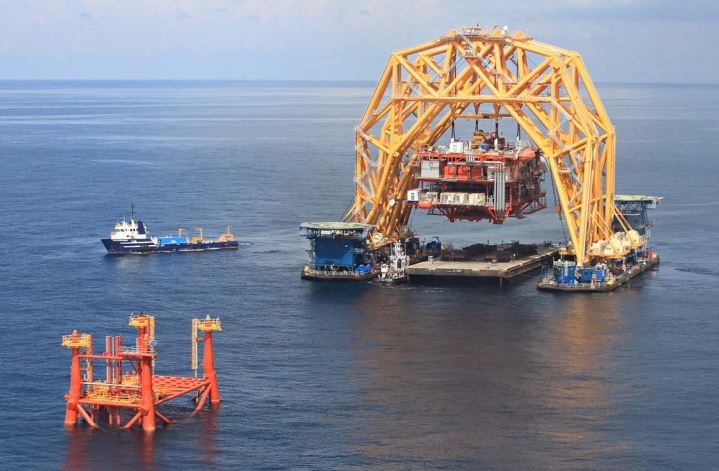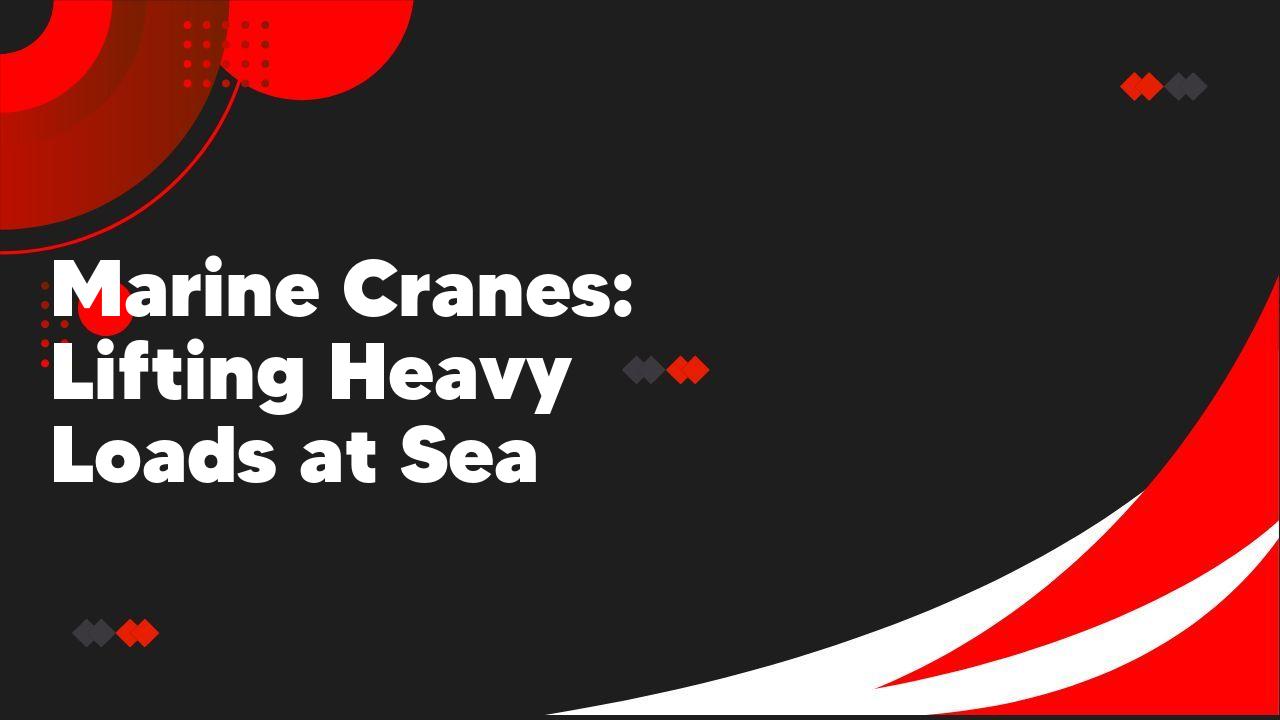Marine cranes play a crucial role in the offshore industry, enabling the lifting and transportation of heavy loads at sea. These cranes are specifically designed to withstand the harsh marine environment and are essential for various operations such as offshore construction, oil and gas exploration, and shipbuilding. This article explores the functionality, types, and applications of marine cranes, highlighting their importance in the maritime industry.
The Importance of Marine Cranes in Offshore Operations
Marine cranes play a crucial role in offshore operations, serving as essential equipment for various tasks. These cranes are specifically designed to withstand the harsh marine environment and are capable of lifting heavy loads with precision and efficiency. They are used for a wide range of applications, including the installation and maintenance of offshore structures, such as oil rigs and wind turbines. Marine cranes are also utilized for loading and unloading cargo from ships, as well as for handling equipment and supplies on offshore vessels. Their versatility and reliability make them indispensable in ensuring the smooth and safe execution of offshore operations.
Types of Marine Cranes and Their Applications

Marine cranes play a crucial role in various maritime operations, and their types and applications are diverse. One common type is the deck crane, which is typically used for loading and unloading cargo onto ships. These cranes are designed to withstand harsh marine environments and have a high lifting capacity. Another type is the offshore crane, which is specifically designed for use on offshore platforms and vessels. These cranes are used for various tasks such as lifting heavy equipment, transferring supplies, and supporting construction activities. Additionally, there are also specialized cranes like the knuckle boom crane, which is commonly used in fishing vessels for handling nets and equipment. Overall, marine cranes are essential equipment in the maritime industry, enabling efficient and safe operations at sea.
Safety Measures and Regulations for Marine Crane Operations
Safety measures and regulations for marine crane operations are crucial to ensure the safety of personnel and equipment involved in these operations. These measures include conducting regular inspections and maintenance of cranes to ensure they are in proper working condition. Additionally, operators must be trained and certified to operate the cranes safely. Safety protocols such as wearing personal protective equipment, using proper lifting techniques, and following load capacity limits are also essential. Furthermore, there are regulations in place to ensure compliance with safety standards, such as the International Maritime Organization’s guidelines for safe crane operations. These measures and regulations aim to prevent accidents, injuries, and damage to equipment during marine crane operations.
Advancements in Marine Crane Technology: Improving Efficiency and Performance
Marine crane technology has seen significant advancements in recent years, leading to improved efficiency and performance in various marine operations. These advancements have been driven by the need for increased productivity and safety in the maritime industry. One key area of improvement is the development of more powerful and versatile cranes that can handle heavier loads and operate in challenging conditions. Additionally, the integration of advanced control systems and automation has allowed for more precise and efficient crane operations. This has not only increased productivity but also reduced the risk of accidents and injuries. Overall, these advancements in marine crane technology have greatly benefited the industry by enhancing operational capabilities and improving safety standards.
Challenges Faced by Marine Cranes in Harsh Sea Conditions
Marine cranes are essential equipment used in various offshore operations, but they face numerous challenges when operating in harsh sea conditions. One of the main challenges is the constant exposure to corrosive saltwater, which can cause significant damage to the crane’s components and reduce its lifespan. Additionally, the unpredictable and rough sea conditions can lead to excessive vibrations and movements, making it difficult for the crane to maintain stability and precision. The strong winds and waves can also pose a risk to the safety of the crane operators and the surrounding vessels. To overcome these challenges, marine cranes are designed with robust materials, advanced corrosion protection systems, and sophisticated control systems to ensure safe and efficient operations in harsh sea conditions.
The Future of Marine Cranes: Trends and Innovations
Marine cranes have come a long way in terms of technology and innovation, and the future looks even more promising. One of the key trends in marine cranes is the development of more compact and lightweight designs. This allows for easier installation and operation on various types of vessels. Additionally, there is a growing focus on automation and remote control capabilities, which enhance safety and efficiency. Another important innovation is the use of advanced materials, such as carbon fiber, which offer higher strength-to-weight ratios and improved durability. Furthermore, the integration of smart technologies, such as sensors and data analytics, enables real-time monitoring and predictive maintenance, reducing downtime and costs. Overall, the future of marine cranes is set to revolutionize the industry with increased efficiency, safety, and versatility.
Conclusion
In conclusion, marine cranes play a crucial role in the offshore industry by enabling the lifting and movement of heavy loads at sea. These cranes are specifically designed to withstand harsh marine conditions and are equipped with advanced features to ensure safe and efficient operations. With the increasing demand for offshore activities, the use of marine cranes is expected to continue to grow, further driving innovation in this field.
What are marine cranes used for?
Marine cranes are used for lifting heavy loads at sea. They are commonly used in offshore construction, oil and gas exploration, and shipbuilding industries.
How do marine cranes work?
Marine cranes work by using hydraulic systems to lift and lower heavy loads. They are typically mounted on ships or offshore platforms and can rotate 360 degrees to reach different areas.
What are the advantages of using marine cranes?
The advantages of using marine cranes include their ability to handle heavy loads, their versatility in reaching different areas, and their durability in harsh marine environments.
Are marine cranes safe to use?
Yes, marine cranes are designed with safety features to ensure their safe operation. They undergo rigorous testing and inspections to meet industry standards and regulations.
Can marine cranes be customized for specific needs?
Yes, marine cranes can be customized to meet specific requirements. They can be designed with different lifting capacities, boom lengths, and additional features based on the intended application.
How often do marine cranes require maintenance?
Marine cranes require regular maintenance to ensure their optimal performance and longevity. The frequency of maintenance depends on factors such as usage, operating conditions, and manufacturer recommendations.

